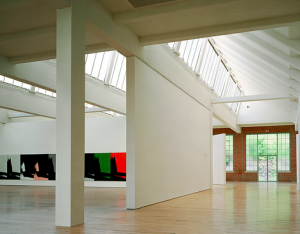From the works of Galia Solomonoff, Dia: Beacon
I received one more answer for the woman considering whether to go back to school to study architecture or pay off her college debt. I am excited to share the 40:20 wisdom of Galia Solomonoff. Galia earned a Masters in Architecture from Columbia University in 1994. She is founder and principal of Solomonoff Architecture Studio and has been internationally recognized for her work. Solomonoff is currently Associate Professor at Columbia University, GSAPP. In searching for the right women to give advice for the question of whether to study architecture, my nephew, a rising, 20-something architect, put me in contact with Galia.
Today Galia responds to the question a 20-something woman has on going back to school to study architecture right away or getting a job with her first degree in environmental science. Galia is full of practical advice and wisdom that would apply to anyone considering graduate school. Look for an interview with Galia later this summer with her very own 40:20 Vision on what she has learned from her experience becoming an architect, founding her own firm and life at large. There’s an interesting interview here on her perspective on the particularities of being an Argentinean woman practicing architecture in New York. In addition you can visit her website here to see her work.
Q. I’m about to finish a four year bachelor of science in environmental science, and starting to see that it’s not going to take me where I want to go. I am wondering if I should start to pay off the debt I’ve already accrued or continue to go to school? I would like to apply for architecture school, which would take another four years and rack up god knows how much more debt.Is it worth it for me to go back to school or should I give up those dreams and settle for a job I can get with this first degree? – 20-something
A. My recommendation is to explore the career of architecture for a year or more while experiencing the overlap already in place between environmental science and architecture.
One of the benefits of working in between careers is understanding the life applications of a given practice. Graduate and professional schools benefit a great deal from people that understand how cities and systems work and this knowledge is best gained while working- rather than studying. This knowledge in combination with academic knowledge makes a significant difference in the depth of a person’s thinking.
Many metropolitan areas have extensive public lectures on the subjects of architecture, urban history, environment and policy that you can take advantage of while working. Most universities offer great open lectures that provide an excellent chance to understand a given program. Before I went to Columbia, I relied on the AIA (American Institute of Architecture), The Museum of Modern Art, lectures at the Public Library, Columbia and Cornell University lectures and events in the city of New York. The lectures were free and open and I had the time to attend while working. Later as a student and now as a professional and professor, I am lucky if I get to see few of my colleagues lectures a year.
All the information about lectures and events are posted in papers and magazines such as the New Yorker. The editorials of a local magazines or papers will list current lecture series on subjects of importance to the city. Many times students’ hectic schedules prevent them from using the amazing resources a city offers. This knowledge will not only help define this woman’s interest but also sharpen specific issues that may advance your thesis later on.
Thank you Galia. Very interesting that when you are studying architecture or practicing it, you rarely have time to take advantage of the resources your city has to offer!
on Twitter
on Facebook
on Google+

